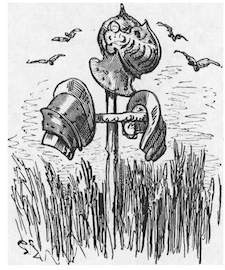

PREFACE
IN translating M. L’Épine’s charming legend, I have felt it my duty to adhere as closely as possible to the text. “Adaptations” and “versions,” whether presented on the stage or set down in black and white, seem to claim for those, who give them in English, a greater share of the glory than I feel myself to deserve, in the slightest degree, in this instance. The delicacy with which the moral is interwoven in the narrative, without in the least injuring the true legendary tone of the adventures related, is as far beyond any improvement I could make, as it is above the usual clap-trap “tag” with which dramas and children’s stories are ordinarily burdened.
I scarcely know to whom I should appeal as my readers, for the story I have delighted in rendering into English seems to me likely to afford pleasure in the perusal to older heads than those which I am sure would gather over the pages in the nursery. For there are a quiet humour and a delicate fancy running through the legend, amid all the exciting accounts of loves and wars, tourneys and battles, accidents and adventures, which do not lose interest because they are illustrated by the powerful pencil of Gustave Doré. That great artist’s fancy supplies these introductory lines with a tail-piece, which aptly typifies the book. Its author has ably made the doings of knights and paladins point a useful moral as well as adorn an interesting tale, just as the artist makes the arms of the chivalric age serve to frighten the birds from the fields that supply our humble daily bread.
